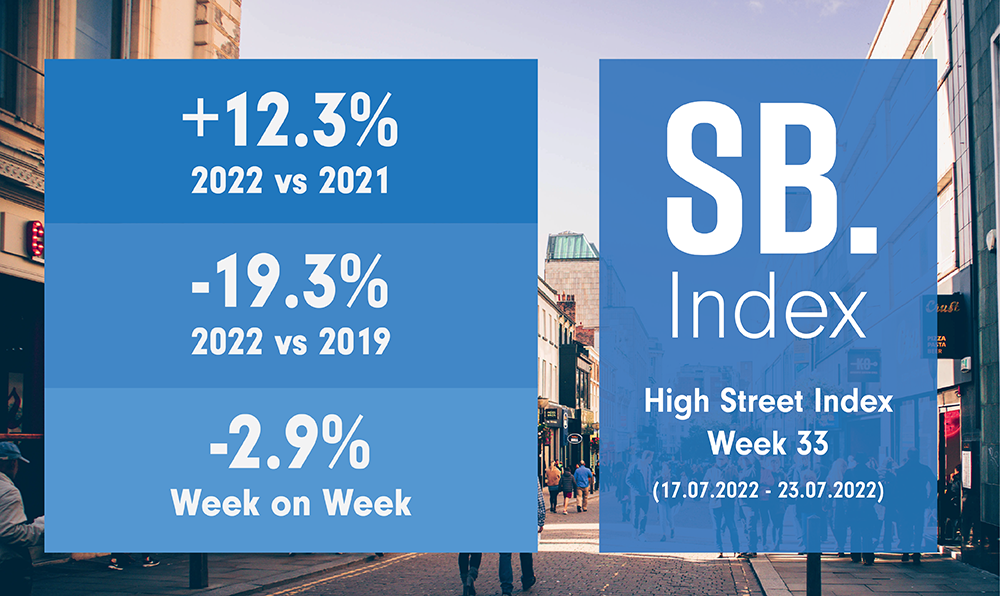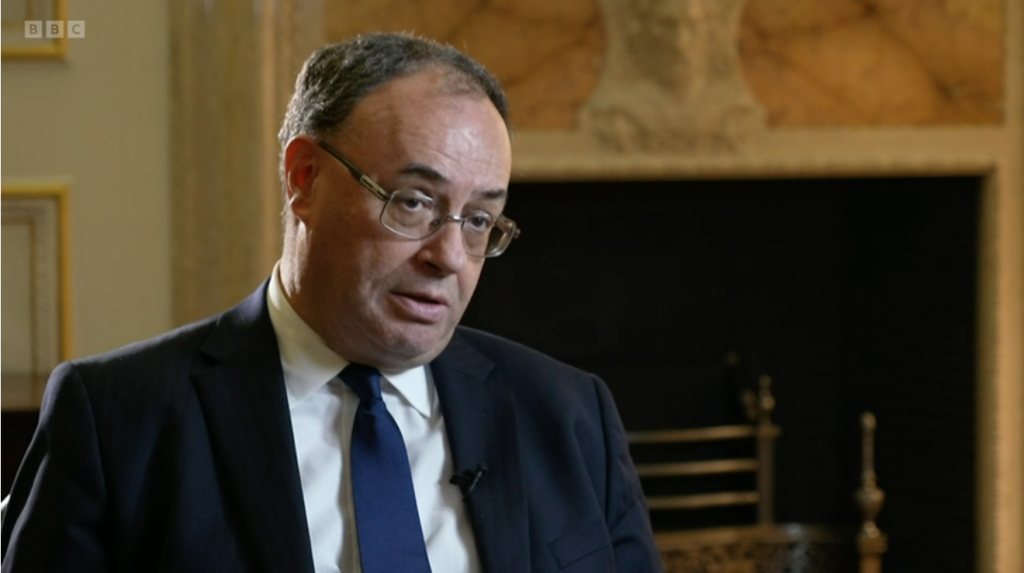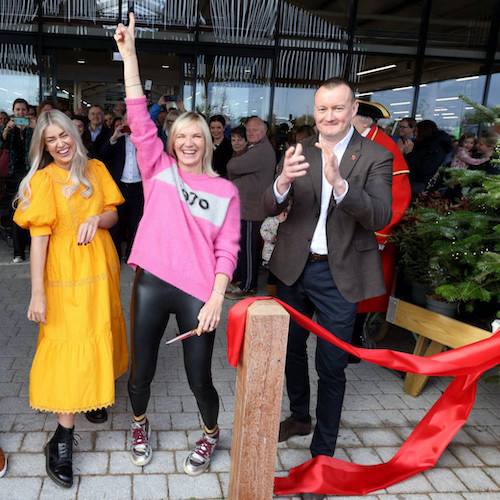Research shows north-south divide developing as Bank Of England warns of recession
The heavy rain and rail strikes last week affected footfall across retail destinations with a decline in High Streets from the week before – and there’s a north-south divide developing in terms of recovery over numbers hitting the shops.
Data from retail intelligence agency Springboard’s Back To The Office Benchmark shows the rail strikes on Thursday, 18 August, led to people working from home so footfall in central London and city centres across the UK all declined, while in market towns and in outer London – which typically benefit from home working – footfall rose.

With their High Street Index figures showing a 12.3% increase in footfall in week 33, 17-23 July, compared with 2021, but a 19.3% decline on 2019, footfall had declined on every day of the week up until and including Thursday, and the heavy rain at the front end of the week meant shoppers headed indoors to shopping centres and for the convenience of retail parks rather than braving the High Street.
From Friday onwards footfall rose, but this was based on a low comparable due to exceptionally hot weather deterring shoppers from visiting retail destinations in the previous week.
Springboard marketing and insights director Diane Wehrle said footfall across UK retail destinations had worsened last month, wiping out all the gains made since April, but she added there was a positive note: “July was two months post the anniversary of the end of Lockdown 3, and UK footfall was higher than in July 2021. Some of the weakening in consumer activity compared with 2019 in July was due to the extreme heatwave experienced in the UK in the third week of the month.”

Diana said their figures make it clear a north-south divide is emerging in terms of the recovery in footfall, indicating the impact of the proportionately-greater burden of inflation being felt in the north. She added: “The north-south divide in footfall recovery is not a recent trend and stretches back to July 2021. However, the extent of the divide has increased significantly over recent months.
“Looking forward towards the remainder of the year, we would normally expect footfall to peak in August and then dip in September as the school summer break ends. However, in light of the increasing strain on household budgets as a consequence of inflation, this year we are anticipating that in August footfall will plateau or even drop away marginally from July, followed by a decline between August and September.”
The news comes just after the Bank Of England’s warning that it expects the UK economy to fall into recession this year, with interest rates having been raised to their highest point in 27 years.
Governor Andrew Bailey told the BBC the economy is forecast to shrink in the last three months of this year and keep shrinking until the end of 2023. Interest rates rose to 1.75% as the Bank battles to stem soaring prices, with inflation now set to hit over 13%.

He said he knew the cost-of-living squeeze was difficult but if the bank didn’t raise interest rates it would get “even worse”, and the expected recession will be the longest downturn since 2008, when the UK banking system faced collapse, bringing lending to a halt but the good news is that the slump is not set to be as deep as 14 years ago although it may last just as long.
The main reason for high inflation and low growth is soaring energy bills, driven by Russia’s invasion of Ukraine. A typical household will be paying almost £300 a month for their energy by October, the Bank warned.
Andrew told the BBC he had “huge sympathy and huge understanding for those who are struggling most” with the cost of living. He added: ‘I know that they will feel, ‘well, why have you raised interest rates today, doesn’t that make it worse from that perspective in terms of consumption?’, I’m afraid my answer to that is, it doesn’t because I’m afraid the alternative is even worse in terms of persistent inflation.”
Top: Rail strikes push footfall up outside central London and city centres
























